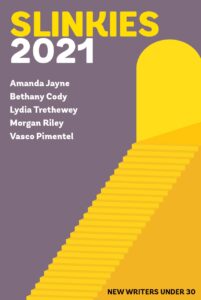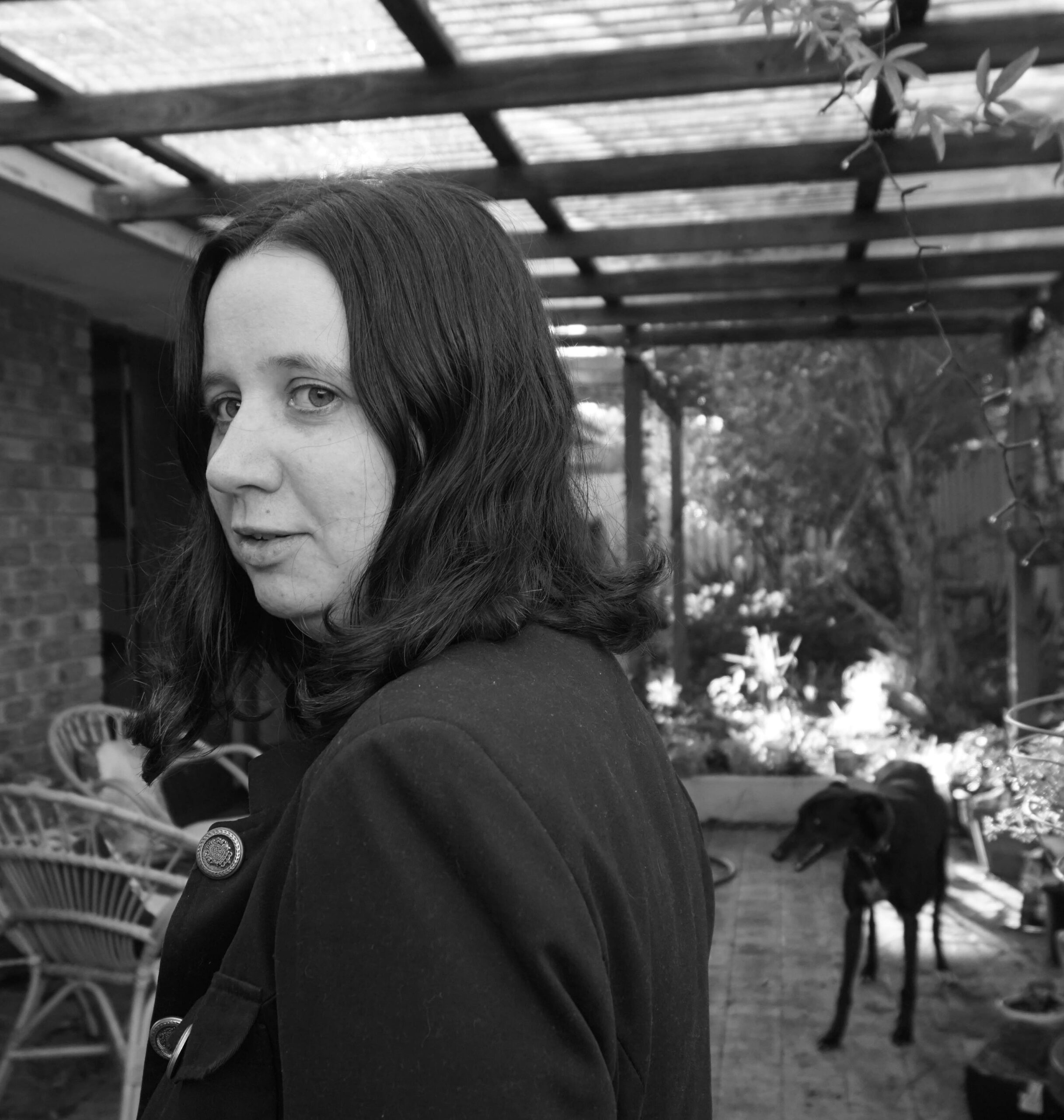We are thrilled to introduce you to Perth-based writer, Lydia Trethewey whose short story, ‘Nothing Is Motionless’ is published in the 2021 Slinkies anthology. In this interview with publishing intern, Jessica Duff, Lydia talks about the origin of her story, about the influence that her visual arts practice has on her writing and her favourite authors. To find out more about this year’s Slinkies, join us on Friday October 1 at 8pm for the online launch of this excellent publication as well as literary trivia, giveaways and the lowdown about Slinkies 2022. Register here.
Was ‘Nothing is Motionless’ inspired by a journey you once took, either physically or emotionally?
Honestly, I think ‘Nothing is Motionless’ may be an indictment of my own self-awareness. It was written about six months after I’d married my husband, in the weeks following a trip we took to visit a friend and her new girlfriend in Broome. This was about six months before I realised I was a lesbian. I’d wanted to write about place and non-belonging, particularly in relation to the coast. I hoped to evoke the multiple ways in which the ocean is unknown to us – cosmically vast, microcosmically small, sublime both as mythology and science – and use this to explore a character’s journey around and into her own unknowability, the parts of herself she doesn’t know. The main character, Elena, is wracked with “vibrations”, a kind of misalignment or nagging sense that something is wrong. She disappears without warning, leaves her husband, and embarks on a long road-trip trying to find a place where she can feel settled, or in-sync with the world, all the time questioning whether it’s possible to feel comfortable in her own life. I didn’t take that road trip – unless you count writing as travelling – but I did feel that sense of discomfort, and I did wonder whether I’d ever feel like I belonged in my own body. I didn’t realise I was gay until after I’d finished writing ‘Nothing is Motionless’, though reading it now, it seems so obvious. So I guess ‘Nothing is Motionless’ wasn’t inspired by a journey; rather, it was part of a journey.
 What are your writing habits?
What are your writing habits?
I don’t think I have writing habits. I try to have writing habits – I try to be good. I’ll say to myself, this month I’m going to write a poem every day or I WILL finish that novel by the end of the year or I’ll write for an hour every morning but inevitably it doesn’t last. If anything, I have a habit of trying to create good habits, and maybe in doing that I come out with an okay writing life. Maybe my best writing habit is not getting too despondent when I don’t live up to my own expectations of good writing habits. I’m just constantly trying to negotiate space for myself to write.
I probably have better reading habits.
What drew you to explore sexuality in your writing?
Visiting my friends in Broome, I woke up one night with a desert in my mouth, and when I looked in the bathroom mirror, I couldn’t see myself there. This is the first part of ‘Nothing is Motionless’ I wrote. The story isn’t autobiographical (and Steph and Alyssa aren’t based on my friends), but I did draw loosely from some of the things that were going through my head at the time. Something was surfacing, and I let it come out in fiction before I had the awareness to do the same in real life. I was drawn to explore sexuality because I had an urgent, bodily need to do so – as a lesbian in a heterosexual marriage, I experienced a constant and consuming sense of wrongness, which I couldn’t seem to articulate in direct relation to myself. I couldn’t understand it. The story isn’t about me, and it wasn’t an exercise in catharsis, but that’s where the focus on sexuality came from. In a way, self-discovery might have been a by-product of writing Elena’s journey, but I was also curious about sexuality more broadly, it’s fluidity particularly in relation to aquatic organisms (like fish and reptiles that change their sex). The idea that both sex and gender are constructed categories, and how that relates to lived experience, is always something I’ve been interested in.
How does your background as a visual artist influence your writing?
In 2016, I wrote a paper in which I argued that looking at digital photography can be a tactile experience, activating a kind of “haptic seeing”. Even though the viewer doesn’t touch the image, the image touches them, as light which falls on the retinas to create sight, falling too on the skin, and sinking through to the musculature and bone. I don’t think it’s a stretch to say that stories can stimulate the same kind of haptic vision. When writing, I draw on my visual and tactile understandings of the world, and rather than working in a strictly linear manner, I try to organise narrative around particular groupings of perception. Perhaps this is why short stories and poetry have always appealed to me. I love the way a story interrupts skin, makes the boundary between self and world, body and imagination, permeable.
What do you like about the short story form?
When I was writing ‘Nothing is Motionless’, I didn’t think of it as a short story – it was a bunch of prose poems stacked on top of each other in a trench coat. I guess what I like about the short story form is that it’s so versatile, you can smuggle in a whole heap of other things. There’s a kind of flexibility in writing short stories, a lack of pressure which allows for greater experimentation and genre-blending. This might also relate to my background as a visual artist, in which I work predominantly in series. Writing a series of short stories allows me to play with a number of interlinked ideas or images, without having to force them into a singular cohesive narrative. This in turn can shift focus to the margins and the liminal spaces, which I think is important.
What other projects are you currently working on? Where can people catch you on the internet?
I’m currently writing an ekphrastic verse-memoir about lesbian becoming, as part of a PhD at Curtin University (WA). I’m curious about the potential of ekphrasis – poems about artworks – to be a site for queer resistance. Some of the poems are available online in places like Meniscus Journal and The Ekphrastic Review. My website is www.trethewey.id.au
I’m also finalising my first novella, which I wrote simultaneously with ‘Nothing is Motionless’, and which is also about queer becoming (a story about a young masochist who becomes obsessed with her tattoo artist).
I’ll be presenting a paper at this year’s AAWP conference, so come say hi.

